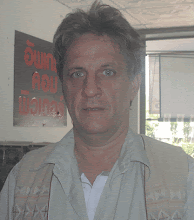The Origin of Siam
Thousands of years ago Huang Di the Yellow Emperor united the tribes of China’s central plains. King Chiyuo and his Miao (Hmong) tribe to the south effectively used fog as a protective weapon, resisting amalgamation. But Huang Di designed a compass chariot with a kind of finger-post which always pointed south, and with its aid, legend says, completed pacification of what became China.
However, to the west non-Chinese tribes remained strong, and in Guangdong professional commerce was hardly held in the contempt for it prevalent among Han Chinese. Surrounding China everywhere but to its oceanic east are mountains and extreme desert. Mongolians, Manchurians, Koreans, Formosans, Japanese and Filipinos, perhaps justifiably suspicious, hardly proved great trading partners. To the south, though, ivory, hardwoods, tin, leather, dried fish and other goods were available for trade.
In SE Asia boats were essential; rice was cultivated but forests weren’t just thick and tall, but full of tigers, huge crocodiles, thick swarms of pestilent mosquitos, mean nasty gibbons and terrible snakes. Rivers were the only roads. There were jungle people, and thus jungle produce for trade, but little militancy. Beaches were rare as compared to mangrove swamps.
The Himalayan mountains, similarly as the Altai, produced people much stronger than those of the plains and coastal areas, stronger enough that they periodically descended to take what they could, including control of a populace. Land wasn’t the issue – workers were. Sometimes these workers would serve as guards, caravan escorts, soldiers. New polities weren’t countries, as we know them, or city-states, but something in-between, without borders, just allegiances, areas of influence, underlings and overlords. Maybe some of these folk descended from the Tibetan plateau and became the Burmese. From the Himalayas east to the ocean are many mountain peoples, while along the southern coast of SE Asia, and in the islands, were shorter, slighter, darker people with kinky or crinkly hair, now largely gone. It was likely pandemic disease that brought about this disappearance, but ‘conscription’ into military forces, and warfare, certainly helped.
After centuries and centuries with large numbers of soldiers and slaves crowded into close proximity, disease more than decimated the population of the Khom/Khmer Empire centered at Angkor. Doubtless, too much wood had been used. Domestic pests including rats, fleas, flies and other vermin surely thrived. As surely, interpersonal tensions did too.
A decision was made to start anew, at a location conducive to trade. A river confluence near Lavo (Lopburi), was chosen. Ayudhaya became a great commercial center, with traditions of music, dance, marriage, blessings and palace ceremonies, retained from those of Angkor. Persians, Kshatriyas, Brahmans and Vaishyas from the Sultanate of Delhi and the Vijayanagara Empire of Chennai (Gujarat, Madras), Chams. Malays, Mon and Cantonese (merchants from Guangshou/Kwangchow) created a port independent of the power of K’aifeng and Shangfu in China, of Bengal, or of Java. For a king they chose a royal of the Shan (‘mountain’) people, and within two centuries one of the most populated cities of the world.
However, to the west non-Chinese tribes remained strong, and in Guangdong professional commerce was hardly held in the contempt for it prevalent among Han Chinese. Surrounding China everywhere but to its oceanic east are mountains and extreme desert. Mongolians, Manchurians, Koreans, Formosans, Japanese and Filipinos, perhaps justifiably suspicious, hardly proved great trading partners. To the south, though, ivory, hardwoods, tin, leather, dried fish and other goods were available for trade.
In SE Asia boats were essential; rice was cultivated but forests weren’t just thick and tall, but full of tigers, huge crocodiles, thick swarms of pestilent mosquitos, mean nasty gibbons and terrible snakes. Rivers were the only roads. There were jungle people, and thus jungle produce for trade, but little militancy. Beaches were rare as compared to mangrove swamps.
The Himalayan mountains, similarly as the Altai, produced people much stronger than those of the plains and coastal areas, stronger enough that they periodically descended to take what they could, including control of a populace. Land wasn’t the issue – workers were. Sometimes these workers would serve as guards, caravan escorts, soldiers. New polities weren’t countries, as we know them, or city-states, but something in-between, without borders, just allegiances, areas of influence, underlings and overlords. Maybe some of these folk descended from the Tibetan plateau and became the Burmese. From the Himalayas east to the ocean are many mountain peoples, while along the southern coast of SE Asia, and in the islands, were shorter, slighter, darker people with kinky or crinkly hair, now largely gone. It was likely pandemic disease that brought about this disappearance, but ‘conscription’ into military forces, and warfare, certainly helped.
After centuries and centuries with large numbers of soldiers and slaves crowded into close proximity, disease more than decimated the population of the Khom/Khmer Empire centered at Angkor. Doubtless, too much wood had been used. Domestic pests including rats, fleas, flies and other vermin surely thrived. As surely, interpersonal tensions did too.
A decision was made to start anew, at a location conducive to trade. A river confluence near Lavo (Lopburi), was chosen. Ayudhaya became a great commercial center, with traditions of music, dance, marriage, blessings and palace ceremonies, retained from those of Angkor. Persians, Kshatriyas, Brahmans and Vaishyas from the Sultanate of Delhi and the Vijayanagara Empire of Chennai (Gujarat, Madras), Chams. Malays, Mon and Cantonese (merchants from Guangshou/Kwangchow) created a port independent of the power of K’aifeng and Shangfu in China, of Bengal, or of Java. For a king they chose a royal of the Shan (‘mountain’) people, and within two centuries one of the most populated cities of the world.

